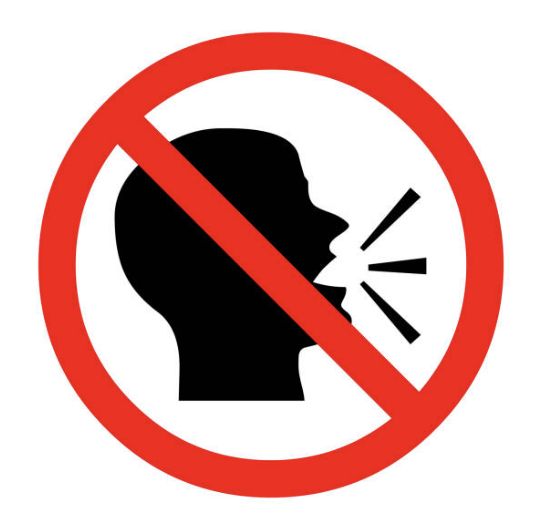america is so fucking based man
in any proper country that company at least gets forced to pay by the government then ordered to shut down forever due to wanton cruelty. all the employees get generous severance except whoever made that call. depending upon your view of carceral punishment there are a few ways to go with that guy.
I’m not sure what’s worse, the insurance was cut or that a life saving drug is 2.1 million?!
That the insurance was cut. Ethics of private drug R&D aside researching costs resources, resources need to be reimbursed, and if you have a drug that heals a rare illness with one dose you sell very few doses. Another drug for another illness might cost as much to research, but you need a dose every month and there’s millions upon millions of patients. Let’s also assume that both drugs cost the same to produce, per dose. Which means that to cover total costs a single dose for the first drug might have to cost two millions, and the other 20ct.
The alternative to this is saying “You have a rare illness, tough luck, we won’t research drugs for it it benefits too few people”.
Places very tightly control the price drugs can be sold for all over the world. They audit the cost of operation, RD, etc and then adjust the price based on a regulated percentage of profit. This means that drug prices, in the rest of the developed world, are far lower than the US. Even in places with non-socialized healthcare like Switzerland, and Japan. Drug companies are still there, still making money, and not increasing drug prices by 1000% because they want to. Then there is the humanitarian practice of subsidizing the cost to patient for exceptionally expensive treatments. For example, the alternative treatment to this drug is more than twice the cost of the drug, it is also less effective, leaving a lot of long term costs. So EU countries, for example, subsidize this drug because it actually ends up saving the tax payers money to do so. This makes it available to the ~1/10000 citizens with the condition, spinal muscular atrophy.
In the US this will likely bankrupt these people, leaving the costs for them and the taxpayer. This ends in a total loss of economic productivity higher than the government just footing the cost for the drug in the first place. The US system is lose/lose. Both the patients and the government pays more than anywhere else. The only people winning here are corporate executives and their shareholders.
The only people winning here are corporate executives and their shareholders.
That’s why I prefaced the whole thing with (more or less)“capitalism aside”: Everything you said also applies to drugs which are still overpriced, but definitely cheaper in the US. The reason this kind of drug is especially expensive, also in places not as fucked as the US, is that it’s a) a one-dose cure and b) for a rare disease. If it were a monthly injection instead of a one-time one it’d still be as expensive but not per dose but per patient-lifetime, and if twice as many had spinal muscular atrophy it’d be roughly half as expensive.
The bargaining EU insurers do with drug manufacturers takes that into account because, as said, otherwise there’d simply be no drugs for those rare diseases.
Overall I think it’d be better for insurers to fund drug research more directly but also then researching cures for rare illnesses would cost a lot of money per manufactured dose.
I think you missed the point of the second part of my statement. That the government pays for expensive treatments because, in the long run, it actually costs less for them to do so, than to hold the patient liable. This means the cost to patient will never be 2.1 million dollars, which accomplishes the goal of drugs not costing that much where it matters.
The only prescription drugs that are cheaper in the US are off brand generics. This is the case because other options are 3-4 times more expensive, on average, than in the EU, so the increased demand for generics creates a manufacturing scale that drops the prices per unit. This price decrease is 20-30% on average. People in the EU are fine with brand names because they aren’t drastically more expensive than generics, even at US generic prices. The end of the day though, they pay less for drugs, as whole, than we do, and no patient is paying 2.1 million dollars for a drug.
People in the EU are fine with brand names because they aren’t drastically more expensive than generics, even at US generic prices.
If I go to the pharmacy I’ll generally get generics, if available, because the insurance is going to give the pharmacist a kickback for finding an option that’s below list price. They’ll also ask doctors annoying questions if they write a product instead of a drug name (Aspirin instead of ASA / acetylsalicylic acid) on a prescription.
In fact if they didn’t do that I’d happily vote for people who’d institute such policies when the next board elections are up.
That the government pays for expensive treatments because, in the long run, it actually costs less for them to do so, than to hold the patient liable.
…that’s the economical equation. The legal equation though is that my insurance is required to pay for everything medically necessary, and that might very much be more expensive than not treating me. Health insurance doesn’t pay welfare for people with, say, severe but manageable OCD: Unemployable yet not in need of assisted living, incurring no more medical costs than the average person. Yet if a cure were available they’d have to cover it.
The economical equation comes into play when paying for or subsidising stuff from fitness apps to whole holiday retreats which are just a scheme to make you take a nutrition and cooking course and similar things.
Except Zolgensma’s R&D was funded through the NiH. The only reason why it costs millions per dose is because Novartis bought AveXis for 8.7 billion solely to acquire the rights to Zolgensma.
[citation needed]?
Wikipedia mentions that it’s based on research from the Institut de Myologie, France, nothing about the NiH.
Also I already made the whole capitalism angle an aside. Plenty of people are talking about it, meaning I don’t need to talk about it. One-dose cures for rare diseases are more expensive per dose than multi-dose treatments for common diseases under any system, that’s what I wanted to say.
I get that y’all yanks hate your medical-industrial complex, and you’re right to, but that doesn’t mean that everything is expensive just because some suit rolled some dice.
“benefited from comparative studies on patients with spinal muscular atrophy”, that’s not “funded the R&D” but “NiH did studies and AveXis read them”. If it was more than that they wouldn’t use that kind of weasel language that only implies, but doesn’t say, things. The rest is approval fast-track which saved AveXis money, but didn’t cost the tax payer a dime.
I’m not saying that they’re not overcharging – of course they are, they definitely are, especially after getting bought up by Novartis and given the US’s inability to actually bargain with drug manufacturers. But this narrative of “taxpayers fronted all the costs” (“R&D was funded through the NiH”, implying all of it) is BS.
And even then, and I fucking knew what I was doing when I said “I don’t wanna talk about the capitalism aspect”, the drug would’ve still been more expensive to develop, per dose, if it was fully state-funded.
Also I wouldn’t be surprised if the French research that led to the whole gene therapy stuff in general was 100x more expensive than those NiH comparative studies. It’s foundational research companies never do that kind of stuff. Probably at least 10-20 PhDs in that overall, funded by the French taxpayer.
The cost of the drug. Since the US refuses to socialize Healthcare, people can’t afford insurance if companies can charge millions for their dosages, and keep getting higher. My insurance at work covers me, but adding family is already at $800/month. My take home pay (without family insurance) amounts to $2,200 a month.
Companies charging millions for cures in the US means only the wealthy get to be fixed.
We have children who need help! Someone call in the “pro-life” conservatives! Don’t worry, gang, we know those God-loving righteous people will come through to solve this. Surely, they will be stumbling over each other help. Nobody talks a bigger game of saving the kids.
They’re pro-birth, not pro-life.
It’s your fault you exist, so thoughts and prayers is all they’ll give you.
thoughts and prayers is all they’ll give you
I wish that was a joke.
You guys are getting thoughts and prayers?
Someone check the Thoughts and prayers counter, it must be raking in lots of pro-lifer support by now.
Important facts for people that didn’t bother to read the article: it’s $2.1m each, so total is $4.2m. The coverage of the drug was cut on a schedule that was determined in January. The diagnosis of the disease was 5 days after the cut.
The cost isn’t an issue in my mind, but I think good to know how much the parents are in for. Insurance companies exist because of these costs, they should have to cover any treatment that has significantly higher success rates, especially when the lack of coverage will result in death, or other life-long consequences.
The timing and schedule are important as the headline makes it appear this decision was in response to these kids being born with the condition, when in fact, there was no diagnosis at the time of the cut and these kids were still months away from being born when the decision was made.
Final bit, though this wasn’t in the article, the drug is being covered for these kids. It took pressure from the state government apparently, or maybe just all the bad press. Shouldn’t change anyone’s opinion on POS insurers, but it’s at least good news that these kids aren’t condemned to a death sentence.
The cost isn’t an issue in my mind,
How is it not?
Insurance companies exist because of these costs, they should have to cover any treatment that has significantly higher success rates, especially when the lack of coverage will result in death, or other life-long consequences.
Yes, they should. But unchecked costs are a big reason why health insurance is so awful right now. We shouldn’t tolerate this price gouging by pharmaceutical companies.
And don’t tell me it’s all about R&D.

What legitimate reason would there be to price drug like that? Is that what the r&d cost to create it? Greed. Thats where 99.9% of cost issues end up for
Zolgemsma is a modified version of adeno associated virus and has to be grown under specific conditions. It costs $500k-$1m per production.. It’s also a one time injection that functionally cures the person of the disease. There are a couple other options but for comparison, the other therapeutic is Spinraza which is an intermittent intrathecal infusion which is $805,000 for the first year of therapy and $380,000 per year thereafter for the rest of your life.
To be clear, I think we should bear the actual costs of research, development, and manufacture as a society and not profiteer off the sick, but there are some contributory reasons for the price.
If it costs 1 million to produce then anything above a 1.1 million cost is still pure greed.
yeah this video was helpful to understand the complexity in manufacturing AAVs, namely the raw size of the proteins manufacturers need to create & interweave.

👆 that little dot in the lower left corner is Aspirin (timestamp 12:00)
Wait if that’s Aspirin then how do they get the big one inside of you? 😱
Those are molecule sizes, all these molecules are still very small
Oh good. I was getting worried there…
There’s always more to the story isn’t there? Else it wouldn’t be called clickbait
Modern drugs cost tens of millions of dollars to develop at a minimum, and can easily reach into the billions.
And usually subsidized with public money.
If only there was a class of people with so much money we could tax the whole amount from them and they wouldn’t even notice.
thats less than nine months ago and insurance would have access to maternity records
Not sure how that’s relevant, can you explain a bit more about what you’re thinking? They couldn’t have been diagnosed with a need for the medication at early-stage pregnancy.
Not diagnosed but if there were early indicators of a problem that could fit into a statistical/AI model that they had a large probability of a range of problems.
couldn’t have been
how do you know?
Because there are very few diseases and conditions that can be detected before birth, and unless they have physical development characteristics (this one doesn’t until after birth) the only way to diagnose them is an invasive procedure that it’s dangerous to the fetus so they are only done when there is a very high suspicion that there is something to detect.
so more like “unlikely” not “impossible” ?
Interesting how insurance companies demand restrictions to “special enrollment” periods or specified times to begin coverage. It’s a tactic to prevent people from beginning coverage before taking on significant healthcare costs and then cancelling after their treatment is finished.
But yet, an insurance company is able to change coverage without following similar practices? Is just about as close to a bait and switch as you can get.
The government doesn’t work for us, they work for business. The laws just follow.
Where’s all the pro-life people and their wallets now?
They’re born now, they don’t matter anymore. Inside the womb: the most precious in the world. Outside the womb: fuck you, scum.
Obviously it’s the moms fault for having kids with a rare disease. Did you see her genes? She was practically begging for it.
Too much avocado toast
making it rain at Trump’s rally.
What are the bad faith laws in the US like? In my province (BC) here in Canada the courts would publicly flay you for such blatant bad faith coverage. When I worked in insurance we had regular seminars with the lawyers on bad faith; the punitive damages can be (intentionally) ruinous to insurers.
If we had bad faith laws the insurance CEOs wouldn’t be able to buy as many yachts, so we don’t have that sort of thing. Some states have laws against surprise out-of-network billing and that is seen as a miraculous blessing.
Canada: Where are your bad faith laws??
American corporations: We don’t do that here meme
…bad faith what now?
What are the bad faith laws in the US like?
I read that as laws that were written in bad faith. Of those, we are bountiful.
deleted by creator
Damages are probably capped below the cost of the drug.
What are the bad faith laws in the US like?
Like the rest of what passes as law in the USA, they probably apply to the poor but not the mighty rich pharma corps
What’s most pathetic is the scale. $2.1 million may seem like a lot for a single use drug, but that $2.1 mil loss dissipated out to shareholders probably isn’t so much. I don’t have the exact numbers but I’ll bet the loss of revenue isn’t even a blip to the average shareholder income.
They’re killing newborns based for what amounts to nothing to them. It’s sick.
It’s not a loss if nobody was going to pay that much anyway. It’s like IP owner’s wildly inflated claims of losses due to piracy.
I get It though. I fucking disagree with it, but I get it. They’re a company playing by US rules. If they make an exception for these babiesz they’ll have to make exceptions for others too. It’s evil, but so is the entire “game” that’s being played here. It makes people evil, so change the game
Why do they have to be exceptions? Isn’t covering unexpected high costs the entire fucking point of insurance in the first place?
No. The point of insurance, as it is right now, is akin to a game of slots in a casino. You keep on swiping your card and expecting a payout on the next pull. You see someone else win big and you hope for that.
But the house always wins. If the house wasn’t winning, they wouldn’t be in the casino business, they’d be bankrupt.
Except in this case your forced to keep playing, because the parking garage is so damn expensive nobody could leave until they win the jackpot. But they don’t tell you about how expensive the garage is until 3 weeks after you park.
Yeah but that is pretty much what I’m saying. The game is fucked. The players like these insurrance companies are fucked but that is mostly because the game is fucked.
Government needs to change the rules, but good luck with that.
Well thank god we don’t have any Death Panels from Obamacare though!
They weren’t really wrong about “Government Death Panels” thing they just neglected to mention that they already existed, and were staffed by MBA-executives there to make profit instead of boring government drones there to bide their time to collect a pension.
And they think they’re protected by that profit motive. Because they vastly overestimate how much their health and lives are actually worth. If you break it down by the numbers, they actually lose money the longer they keep you alive. At the moment you become a loss center instead of a profit center, they deny coverage.
Canada just beat us to it, is all.
Nother example of how much care for babies exists after theyre born
Your life ain’t worth a thing until you make money for the rich.
The life of patients is such a joke to pharma companies that the one that distributes this drug (Novartis) thought it would be ethical to “donate” doses through a literal lottery system.
I do that and my life still isn’t worth anything to them
Your life will never mean ANYTHING to the rich
Why does the medicine cost 2.1 million in the first place? Is it just price inflation or it’s made of antimatter or something?
From https://www.drugs.com/medical-answers/zolgensma-expensive-3552644/
Zolgensma is a one-time-only gene therapy treatment for children aged less than two years with spinal muscular atrophy (SMA) that costs $2.1 million for the single treatment. The reason Zolgensma is so expensive is because that is the price Novartis has decided it is worth because it “dramatically transforms the lives of families affected by this devastating disease” and the claimed cost of bringing new drugs to market. But this price is not without controversy. For a start, the early development of Zolgensma was financed by the National Institutes of Health and several charities devoted to finding treatments for SMA, including many U.S. charities such as Sophia’s Cure, Cure SMA, Getty Owl Foundation, Fighting SMA, Jadon’s Hope Foundation, the Gwendolyn Strong Foundation, and Miracle for Madison. Many of these charities use donations by patient families and friends to subsidize research and clinical trials into new medicines for SMA. The CEO of Novartis, Vas Narasimhan, argues that gene therapies represent a medical breakthrough in the way that they offer hope of a cure for deadly genetic diseases with a single dose. In some cases, the alternative is a multi-dose treatment with incremental improvements. For example, an alternative to Zolgensma is Spinraza that is taken four times a year for life. The list price is $750,000 for the first year and then $350,000 per year after that, so about $4 million a decade. But how do they calculate the actual cost? Many companies use a value-based pricing model which calculates the cost based on how many years of life gained as well as taking into account the effectiveness of the drug. But this means putting a price on how much a life is worth, as well as ensuring the company makes a reasonable margin on their investment. Little is disclosed about the true cost of bringing a new drug to market, and Novartis didn’t develop Zolgensma but acquired it through the $8.7 billion purchase of US firm AveXis.
So there is no tangible reason why it’s this expensive.
“Because we said so and if you don’t want your kid to be a fucked up cripple loser you’ll fucking pay us, removed.”
- Novartis
I have no fucking clue about this particular medicine, and Americans are getting an absolutely raw deal on healthcare
BUT
Non-greedy reasons that can raise the price of a drug:
-
manufacturing costs. Maybe the ingredients are expensive. Maybe the synthesis has a very low yield. Maybe storage is very expensive. Maybe storage is such a removed the drug needs to be made on-demand. Maybe storage is straight-up impossible so the drug needs to be made on-site.
-
Low demand. If very few people need the drug, you can’t spread out the cost of R&D or manufacture. Furthermore, it’ll force you to use low-volume manufacturing methods, which will be more expensive. It might be so low volume that you literally just pay a chemist to synthesize the drug on a bench top, which could take weeks of labor, depending on the synthesis.
-
delivery mechanism. Suppose the drug itself is relatively cheap, but it needs to be delivered by a long-term release capsule implanted in your spleen. Suppose it needs to be delivered by IV drip continuously for a week. Suppose it needs to be taken under direct supervision for some reason.
Probably other shit, it’s been a while since I studied where healthcare costs come from.
Edit: lol, sounds like the justification the pharma company is going with is “fuck you, is not a child’s life worth everything you’ve got?”
- FDA regulations. Specifically - the insane amounts of tests and trials required to approve a drug.
You mean the part where we make sure medicine is actually medicine.
Yeah, don’t assume they were saying that’s unnecessary, just that it is expensive.
I mean the part where we make sure the medicine that can potentially save your otherwise doomed life doesn’t give you a mild rash.
Historically, large-scale withdrawals of drugs from markets ONLY occur, and large-scale marketing ONLY is barred when the side effects are deemed dangerous enough to not risk at any significant percentage. If you look through the list of withdrawn drugs throughout the world, almost all of them are withdrawn for either abuse reasons, or significant side effects like organ toxicity, serious risk of overdose even inside prescriber control, carcinogenicity, or neurological reactions (like some fungicides/bactericides causing blindness/deafness even when used properly).
SOME of these have been returned to market (like thalidomide) under very strict guidelines, used for very strict reasons (thalidomide is used for leprosy and multiple myeloma treatment now in certain situations, in combination with certain drugs to help reduce teratogenicity). Others, which were formerly seen as helpful, have been removed from markets because of newly-found dangers involving them (like Zantac, which was found to spontaneously break down into a carcinogenic compound).
Zantac? No shit? Well I’m sure glad all those zantac commercials I used to see didn’t work on me!
This is not about the cost of withdrawing or barring drugs as much as it is about the cost of running all these tests and trials. And yes, drugs can potentially have terrible side effects, but not being able to afford the drug can also have terrible results.
If the FDA requirements were much less strict, the drug company would have had to spend much less on R&D. That, of course, would not be enough to lower the price - but the other effect of cheaper R&D is that it’s easier for other companies to compete, and competition does drive prices down. The the point either the mother could either afford it herself, or the insurance wouldn’t be so stingy about paying it.
Now, of course, less strict requirements also mean we know less about the drug’s safety and efficiency. Let’s say that, because of the lack of knowledge, we assign a 50% probability for the drug to kill the patient and even if it doesn’t we only assign 50% probability for it to work (that does not mean it killed half the test subjects and failed for half of the remaining ones - just that we didn’t test enough to get significant results that say otherwise, and these are the worst case estimates under our lack of data). That means, that there is only 25% chance for each one of these twin babies to survive if they take the drug.
Which is better than the 0% they get now, being unable to afford it.
-
Definitely not because Novartis is trying to recoup the 8.7 billion they spent on AveXis to acquire Zolgensma…
And denying it to people who desperately need it but don’t have that kind of money is helping them recoup the costs how?
Novartis isn’t the company who are denying it, that would be the insurance company Mosaic’s Health Care Trustees who aren’t covering it because it’s too expensive as stated in the article.
Insurance companies will do anything possible to get out of paying for specialty tier medications from using ‘step therapy’ where before they will approve the medication your doctor approved you must first try and fail all the available medications starting from least expensive. Insurance companies typically also charge a presentage on speciality drugs for the copay as a deterrent from being prescribed those medications. Currently the advocacy side of some large disease-focused charities such as the arthritis foundation are trying to get congress to federally ban step therapy and set a cap for specialty tier drug copays like they have for the other drug tiers.
Shit legislation with lack of price-negotiation through collective bargaining, is the main issue, costs land at the individual enduser in the end. They could’ve likely gotten half the money and save the twins but instead they’ll get none with that pricetag calculated from putting a number to the value of a human life - that makes most insurers pull out the fineprint and drop coverage overnight…
This talks about it
But it’s not really of any value because it basically says “we don’t know” and it’s not only Canada
In a statement, Chief Executive Officer Mike Poore told KCTV5:
“Global pharmaceutical companies are putting profitability over affordability, making it impossible for employers like our hospital system to bear the financial burden of these exorbitant drug prices.
In January 2024, Mosaic’s Health Care Trustees made the gut-wrenching decision not to cover expensive gene therapy used to treat ultra-rare diseases. Covering these treatments could cripple the financial viability of our health system, directly impacting our more than 4,000 employees and the approximately 270,000 people who rely on the health care we provide in small communities across four states.
We are working hard to help find alternative solutions and financial resources to help in this case. Bottom line: Families should not have to focus on the astronomical costs imposed by drug companies, but instead should be able to focus on the care of their children in a medical crisis.”
wow it’s almost like it’s a shitty fucking system and you’re very much a part of it.
from his linkedin:
“Mike is one of the finest men with whom I have ever worked. He relates well to and inspires his employees. He demands high quality while keeping his eye firmly on the bottom line. I would follow him anywhere!”
Maybe we shouldn’t make healthcare decisions while keeping our eyes on the bottom line, wow
For the persons interested the detailed cost vs clinical benefit for the Zolgensma done by the French national social security is public.
The conclusion is that the clinical benefits of this treatment are substantial for type1&2 so it will be reimbursed by the national social security. For the patient with the type 3 disease other treatments will be favored.
health insurance companies only profit when humans directly suffer.
we let this happen daily.
The American healthcare industry is the envy of the world.
As an Australian the only thing I envy about the US is the Mexican food there.
“mexican” food… It’s tex-mex, tasty but a far cry from the real thing
Close to 40 million Hispanics of Mexican descent live in the USA. You don’t think there is good Mexican cuisine there? Because in my experience, anywhere I find Mexicans, I find some damned good vittles.
I’m sure there is authentic Mexican cuisine in the USA as there is anywhere mexicans are … I’m assuming that’s not what op meant since it makes little sense
Why do you assume that? Why would it not make sense to mean Mexican food when saying Mexican food.
I thought it weird otherwise… Like some saying they love going to France for the fantastic Italian cuisine…
deleted by creator
You’re being downloaded but this is true. You won’t find a burrito in Mexico City.
Dude I just got back from Mexico City and burritos do exist there. They consider it USA food along with cheeseburgers. Mexico isn’t static, they adopt food like everyone else.
it’s made for tourists just like cheeseburger
Nah dude, they were definitely eating it. You could get a gordita from a street vendor and falafel from a restaurant with both of them selling Coca Cola. People like foods from around the world, including Mexicans.
Well I guess I wont go to mexico city for a burrito then. I’ve got news for you: the whole point of tex mex is that its very thoroughly americanized.
deleted by creator
yea that’s what he said
https://mr.mercadoroma.com/ This place has Burritos
You misspelled “pity”
Explain to me how this drug costs that much to manufacture
While a healthy portion is, ugh, profit margin
Often with these rare diseases, if there’s a cure or treatment for it often they require bespoke drugs. Sometimes with specialty equipment designed and built just for that drug (or drug family). Ofc with rare diseases, they probably only make like 5/year or some shit so they never scale well. In some cases (like if there’s a short shelf life), they even make the drug on an as needed basis, further increasing cost
One of these specialty 2 mil dollar drug might still cost an actual 1 mil to make taking out profit margin/R&D recovery costs.
R&D recovery costs.
Except the r&d was funded by the government. I highly doubt that they’re paying back those funds (though they definitely should), so, as usual, that excuse won’t fly.
No one has given you an actual reply just assuming that the manufacturing costs for the drug are low. Zolgemsma is a modified version of adeno associated virus and has to be grown under specific conditions. It costs $500k-$1m per production.
It doesn’t cost that much because the company are making a hefty profit, of course. And much more profit off it in the US as per usual, the NHS pays considerably less
The deal struck [in 2021] with Novartis Gene Therapies, secures the drug for NHS patients in England at a substantial confidential discount and paves the way for the National Institute for Health and Care Excellence (NICE) to publish draft guidance recommending treatment with Zolgensma.
The terms of the deal mean that some young children that currently fall outside the NICE recommendation criteria will also be eligible to be considered for treatment by a national multidisciplinary clinical team (MDT) made up of the country’s leading experts in the treatment of SMA.
This means as many as 80 babies and young children could potentially benefit from the life-changing gene therapy a year.
But profiteering aside, the number in the final paragraph is your answer. Up to 80 kids in the UK per year, so up to ~400 in the US, ~500 for the EU. It’s not a big market but the cost of drug development doesn’t get cheaper just because the number of cases is small, it gets more difficult and more costly. And there’s more than one drug company chasing the market.
None of that is a defence of Pharma. But it is inevitable under capitalism. Eat the rich etc etc.
It doesn’t cost that much to manufacture. The costs usually come from the time and people to research and develop this drug over years of trials playa…











